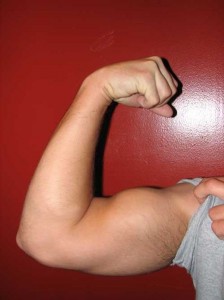We know what polymers are: long chains of repeating molecules. But we didn’t know how to measure how weak or strong they are. Until now.
Whether polymers are strong depends on how many structural flaws they  have. They are stronger if each polymer chain binds to another chain. They are weaker if a significant portion of the chains bind to themselves, forming floppy loops, reports Nanowerk.com
have. They are stronger if each polymer chain binds to another chain. They are weaker if a significant portion of the chains bind to themselves, forming floppy loops, reports Nanowerk.com
“If your material properties depend on having polymers connected to each other to form a network, but you have polymers folded around and connected to themselves, then those polymers are not part of the network. They weaken it,” says Jeremiah A. Johnson, an assistant professor of chemistry at MIT.
Johnson and his colleagues have developed, for the first time, a way to tell how many of the floppy loops are in the polymer network. They believe that this development is the first step toward making materials that don’t contain these weak areas.
Polymer chemists have known about the floppy loops since the 1940s, but they have not had a method in which to count them. In a paper that appeared in the Proceedings of the National Academy of Sciences, MIT researchers measured percentage of loops in a gelatin. However, their method could be used with any type of polymer network, they say. Nanowerk.com explains their research:
To measure the number of loops, the researchers first design polymer chains that incorporate a chemical bond, in a specific location, that can be broken using hydrolysis. Once the polymer crosslinks into a gel network, the researchers treat it with a base that cleaves this chemical bond, known as an ester. (Other degradation methods, such as enzymes or light, could also be used.)
Because they know where the break points are, the researchers can predict the percentages of the four different degradation products they should expect to find in an ideal, no-loop network. By measuring the quantity of each degradation product and comparing it with the ideal, they can figure out what fraction of the polymer formed loops. They found that the percentage of polymer loops ranges from about 9 percent to nearly 100 percent, depending on the concentration of polymers in the starting material and other factors.
“Even in the best material we can make, 9 percent of its junctions are wasted as loops, which tells us that if can figure out a way to reduce loop formation, we’d have a 9 percent improvement in material properties,” Johnson says.
The research has gained the respect of chemists who were not part of the research. “The technique is a beautiful combination of experiment, theory and state-of-the-art analytics that takes the field a giant step toward sorting out a problem of tremendous importance,” says Christopher Bielawski, professor of chemistry at the University of Texas at Austin.
Not only are the researchers now trying to reduce the number of loops by finding the right mix of polymers, they also are trying to use their method to study interactions between cells and biological materials. Nanowerk explains:
It has already been shown that at the micron scale, cells behave differently depending on the mechanical properties of their environment, such as stiffness. In their new studies, the MIT researchers want to look at nanoscale interactions between cells and specific protein sequences found in the extracellular matrix, which provides structural support for cells. The researchers hope to uncover what happens when a cell grabs on to a protein that is looped on itself rather than being attached to the extracellular matrix.
Source: “A step toward stronger polymers,” Nanowerk.com, 11/6/12
Image by EncycloPetey.
